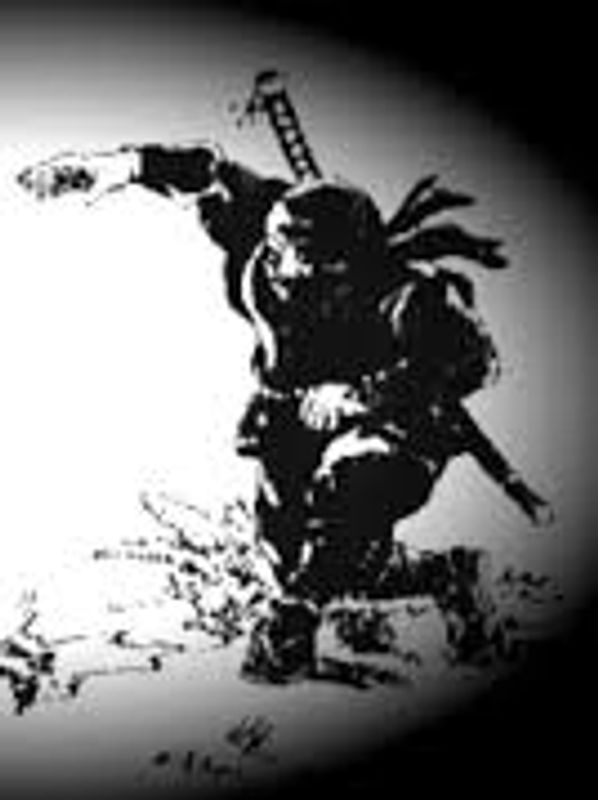
What is Bujinkan Budo Taijutsu?
The Bujinkan (武神館) is an international martial arts organization based in Japan and headed by Soke (Grandmaster) Masaaki Hatsumi. The combat system taught by this organization comprises nine separate ryuha, or Martial traditions, which are collectively referred to as Bujinkan Budō Taijutsu. The Bujinkan is most commonly associated with Ninjutsu. However, Masaaki Hatsumi uses the term Budo Taijutsu (meaning the skills of using the body for the purpose of Martial training) as the ryūha are descended from 6 historical samurai schools that teach samurai martial tactics as well as 3 ninjutsu schools that teach ninja tactics.

What is Ninjutsu?
Ninjutsu (忍術) translates as the “art of perseverance.” While a relatively modern term, it refers to the skills and method of the Ninja that occupied the Iga and Koka regions of feudal Japan. Contrary to popular belief, the Ninja were not "enemies of the Samurai." Many Ninja were Samurai, whom had an extra set of skills. It is similar to the difference today between an Army Soldier and a member of the Special Forces. The Ninja specialized in a set of skills known as the Ninja Juhakkei (The 18 Disciplines). Ninja jūhakkei was often studied along with Bugei jūhappan (the 18 samurai fighting art skills). Though some techniques were used in the same way by both samurai and ninja, others were used differently by the two groups. The 18 disciplines are:
- Seishinteki kyōyō (spiritual refinement)
- Taijutsu (unarmed combat)
- Kenpo (Swordsmanship)
- Bōjutsu (longstaff)
- Shuriken (throwing blades)
- Kusarigama (chain and sickle)
- Yari (spear)
- Naginata (halbred)
- Bajutsu (horsemanship)
- Suiren (water training)
- Kayakujutsu (pyrotechnics)
- Hōryaku (tactics)
- Chōhō (espionage)
- Shinobi-iri (Infiltration)
- Inton (Concealment)
- Hensōjutsu (disguise)
- Tenmon (meteorology)
- Chi-mon (geography)

What are the 9 traditions studied in Bujinkan Budo Taijutsu?
Togakure-ryū Ninpō Taijutsu (戸隠流忍法体術)
Togakure Ryu is arguably the most famous of the 9 traditions taught in the Bujinkan, namely because it is a Ninja tradition. Most of the techniques of Togakure Ryu are focused on escape; the techniques are meant to momentarily incapacitate the opponent long enough to allow the practitioner to escape and/or hide.
Gyokko-ryū Kosshijutsu (玉虎流骨指術)
The movement of Gyokko Ryu involves 45 degree angles and large circular movements. Many of the techniques focus on redirecting the opponents attack to take balance, to create striking and throwing opportunities.
Kuki Shinden Happō Bikenjutsu (九鬼神伝流八法秘剣術)
Kukishinden Ryu teaches us to fight while wearing heavy and restrictive armor. This school is also our predominant source of knowledge regarding traditional Samurai weaponry.
Kotō-ryū Koppōjutsu (虎倒流骨法術)
Unlike it’s sister school – Gyokko Ryu – Koto Ryu tends to be more linear and aggressive in it’s movements, as well as involving a lot of tobi (“leaping”). It’s interesting to note that many of the techniques involve surprise attacks to the opponent, leaving no opportunity to counter strike.
Shinden Fudō-ryū Dakentaijutsu (神伝不動流打拳体術)
Much of the movement in Shinden Fudo emphasizes both natural movement of the body and those found in nature. There is little “formal” kamae, rather “Shizentai” (Natural Body) or Za Gamae (seated techniques) is used. There is also strong emphasis on redirecting the opponents energy past you when performing a technique.
Takagi Yōshin-ryū Jūtaijutsu (高木揚心流柔体術)
Takagi Yoshin Ryu uses alot of hip movement as leverage to throw the opponent. As most of the combat derived is indoors, many of the techniques drive the opponent into the ground and finish with pinning or restraining them. Movements are very explosive, and incorporate natural recoil or resistance to take the opponents balance.
Gikan-ryū Koppōjutsu (義鑑流骨法術)
Gikan ryu contains many special kicks, punches, and throws and its dynamic footwork is used widely within the Bujinkan system. Unfortunately little of the actual techniques have been taught in the west and so little is known. People think that many of the Gikan ryu kamae are off balance because they need extensive practice before they start to “feel” right. One of the special teachings of the ryu is Bufu ni sente nashi (from this side there is not the first strike) which tells us that this was a defensive, not offensive art.
Gyokushin-ryū Ninpō (玉心流忍法)
It is not known in the west as to what the fighting techniques of the Gyokushin Ryu are. All that is really known is that it uses sutemi throws. What is known is that this school concentrated more on the espionage side of ninjutsu, rather than the fighting side. It has been said that the specialties of this ryu were the kusari fundo, ninjutsu, koppojutsu, jutaijutsu, kenjutsu and iaijutsu, although we have no confirmation on this.
Kumogakure-ryū Ninpō (雲隠流忍法)
“Hidden School” was founded in the mid 1500's by Iga Heinaizaemon No Jo Ienaga who was said to have changed his name to Kumogakure Hoshi. It may have originated as a school of thought based on non-violence. It is said that the phrase "Shikin Haramitsu Daikomyo" comes from this ryu and reflects both Buddhist and Shinto attitudes.
This website uses cookies.
We use cookies to analyze website traffic and optimize your website experience. By accepting our use of cookies, your data will be aggregated with all other user data.
